Abstract
Correspondences between verbal responding (saying) and nonverbal responding (doing) may be organized in terms of the classes of verbal/nonverbal relations into which particular instances of verbal/nonverbal response sequences can enter. Contingency spaces, which display relations among events in terms of the probability of one event given or not given another, have been useful in analyses of nonverbal behavior. We derive a taxonomy of verbal/nonverbal behavior relations from a contingency space that takes into account two conditional probabilities: the probability of a nonverbal response given a verbal response and that probability given the absence of the verbal response. For example, positive correspondence may be said to exist as a response class when the probability of doing is high given saying but is otherwise low. Criteria for other generalized classes, including negative correspondence, follow from this analysis.
Keywords: contingency space, correspondence, generalization, verbal behavior
Full text
PDF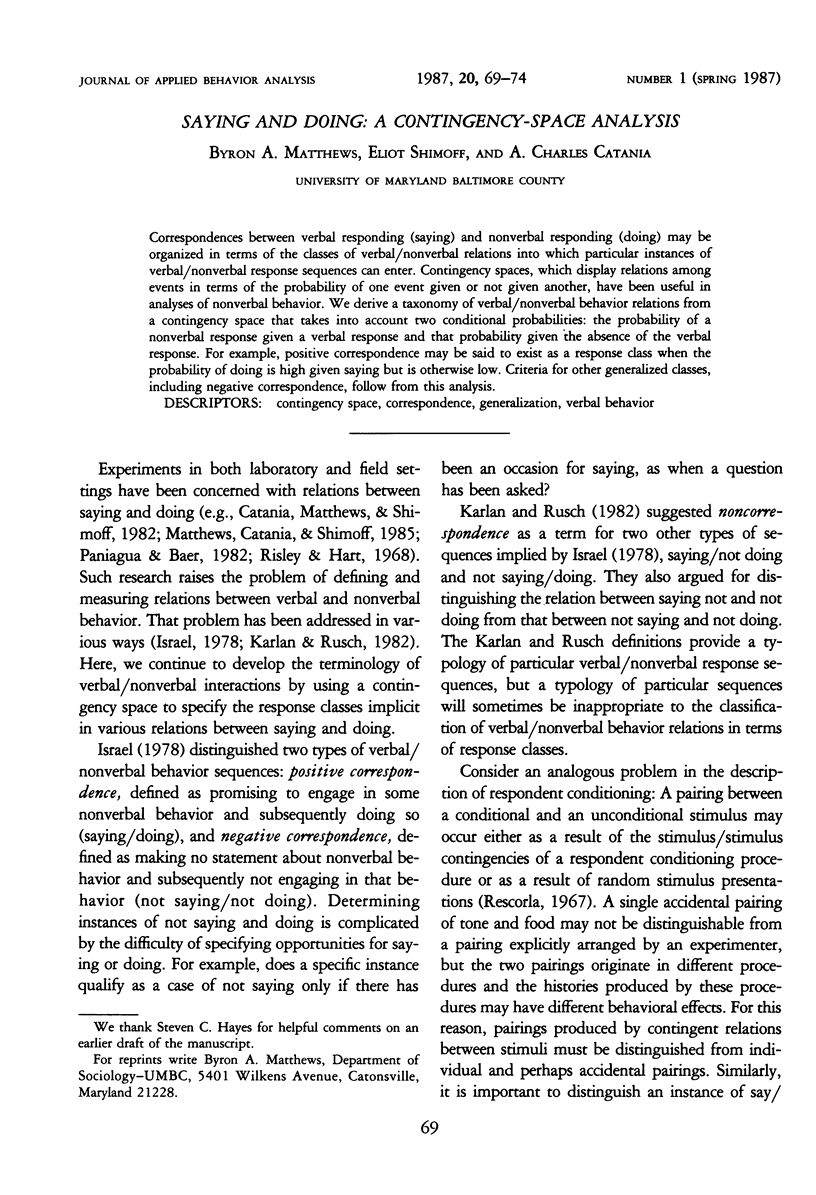
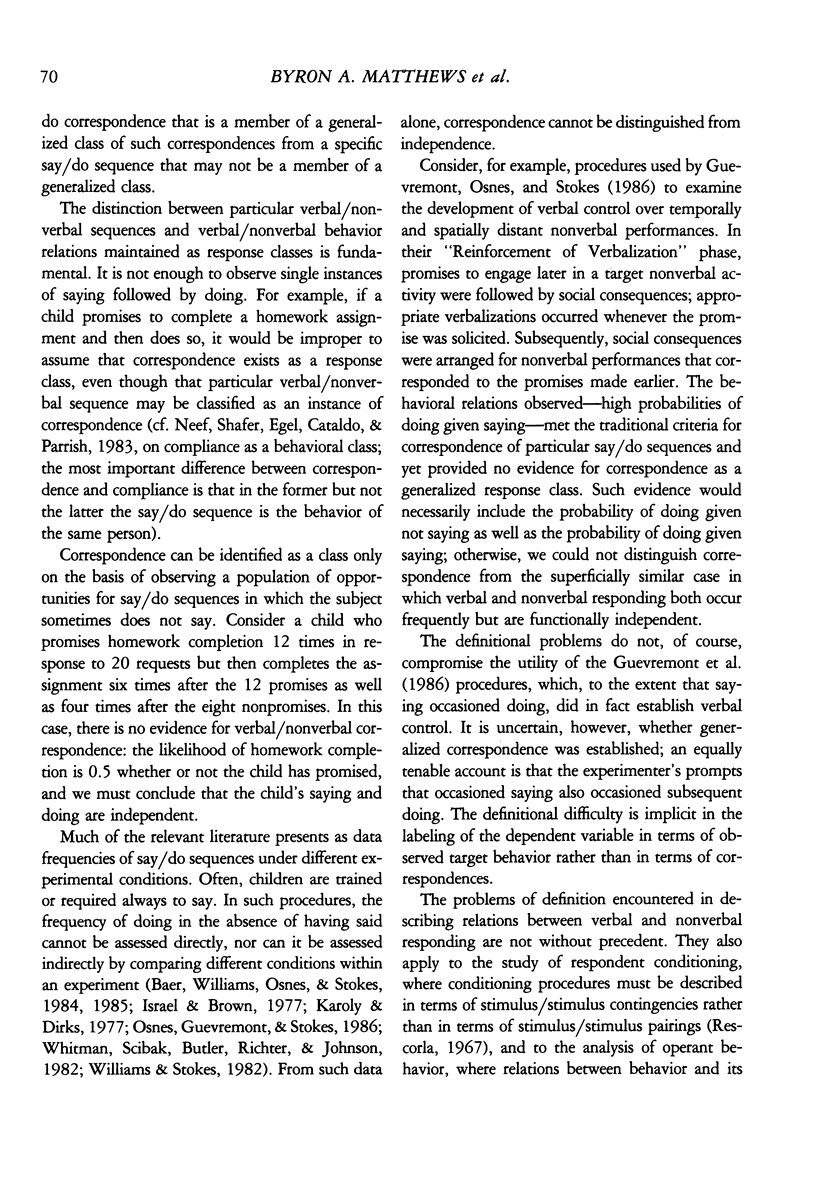
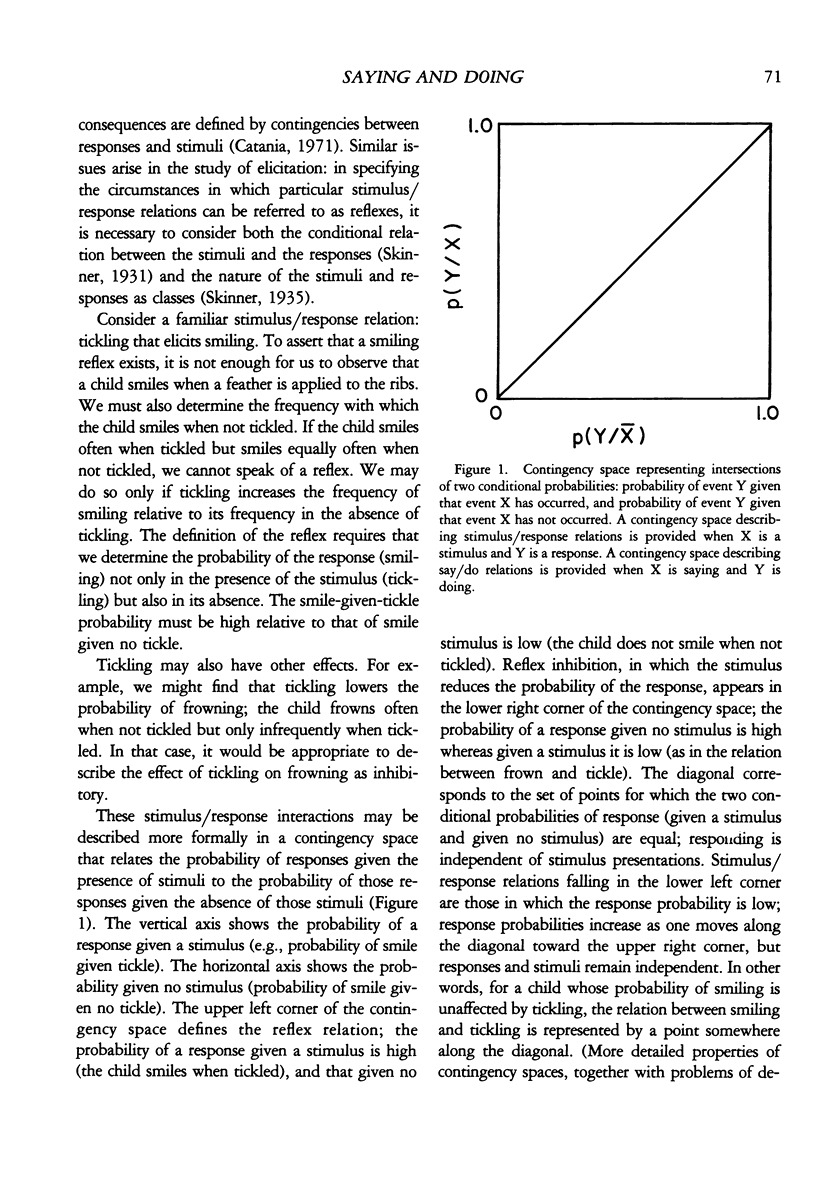
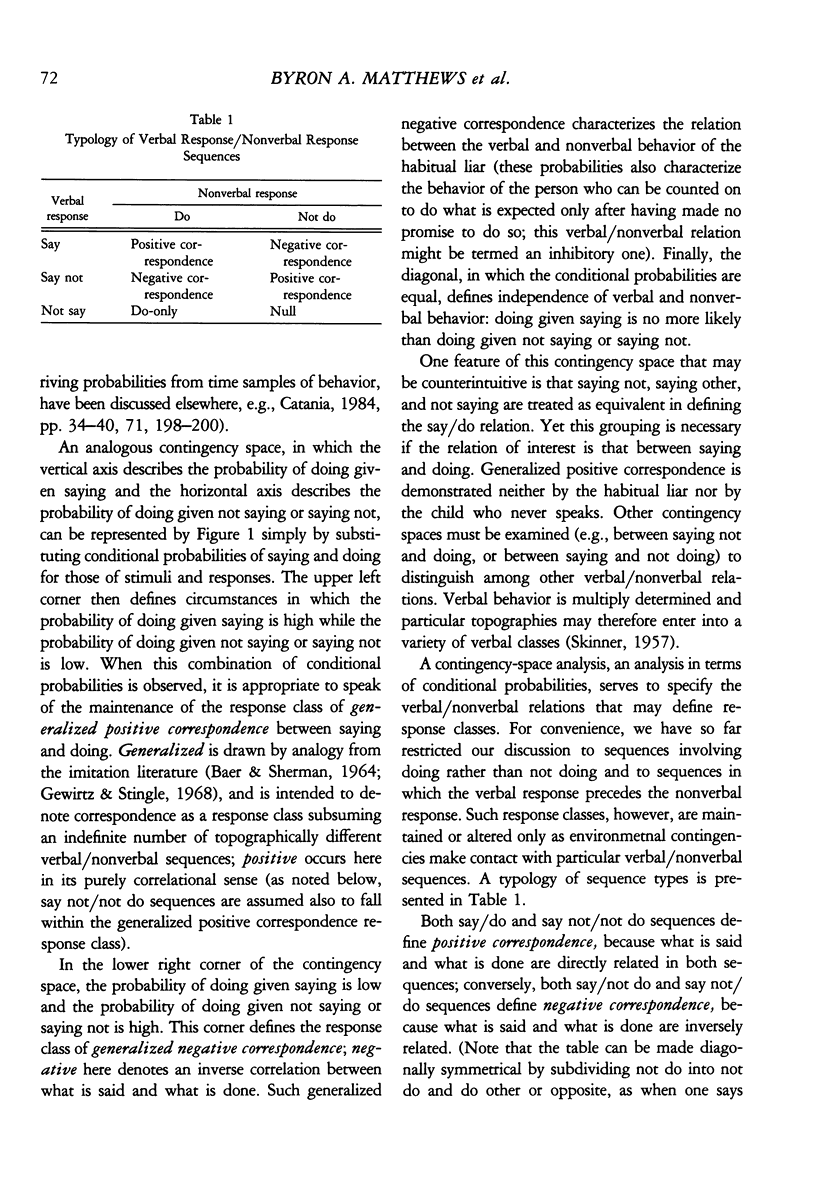
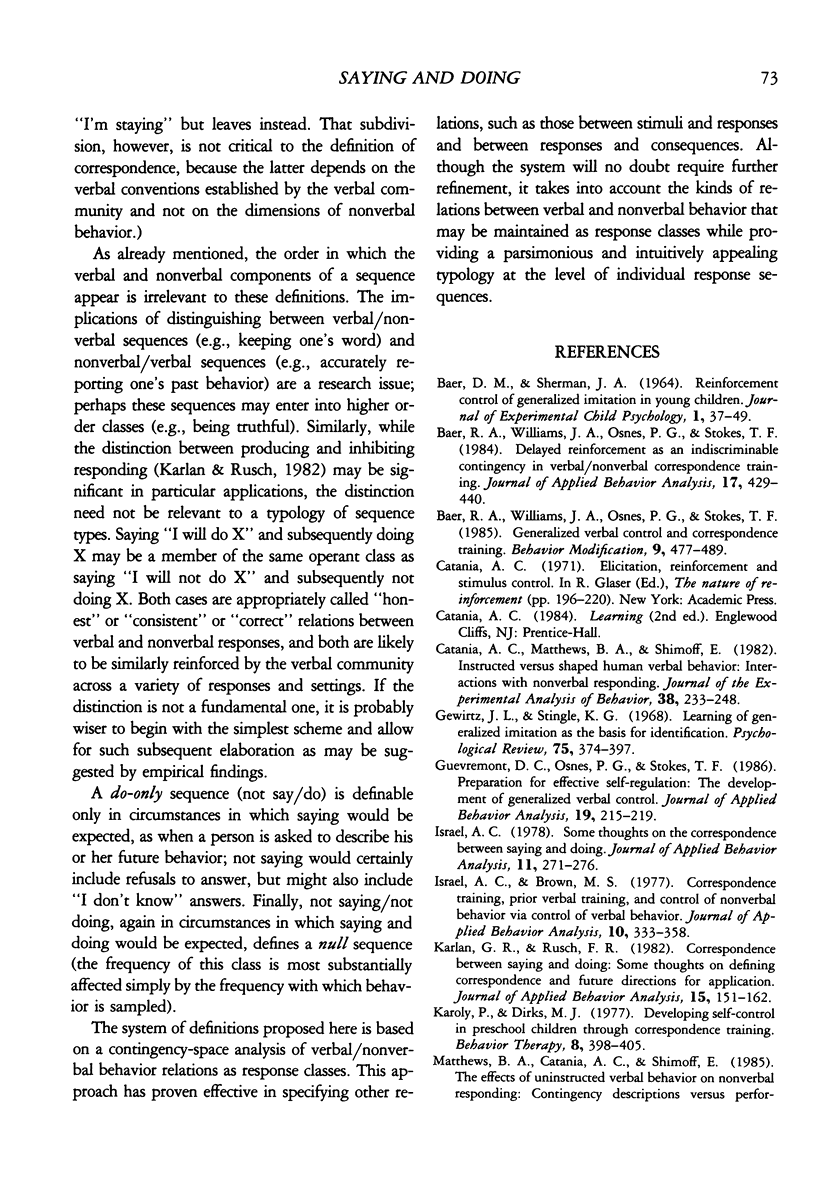
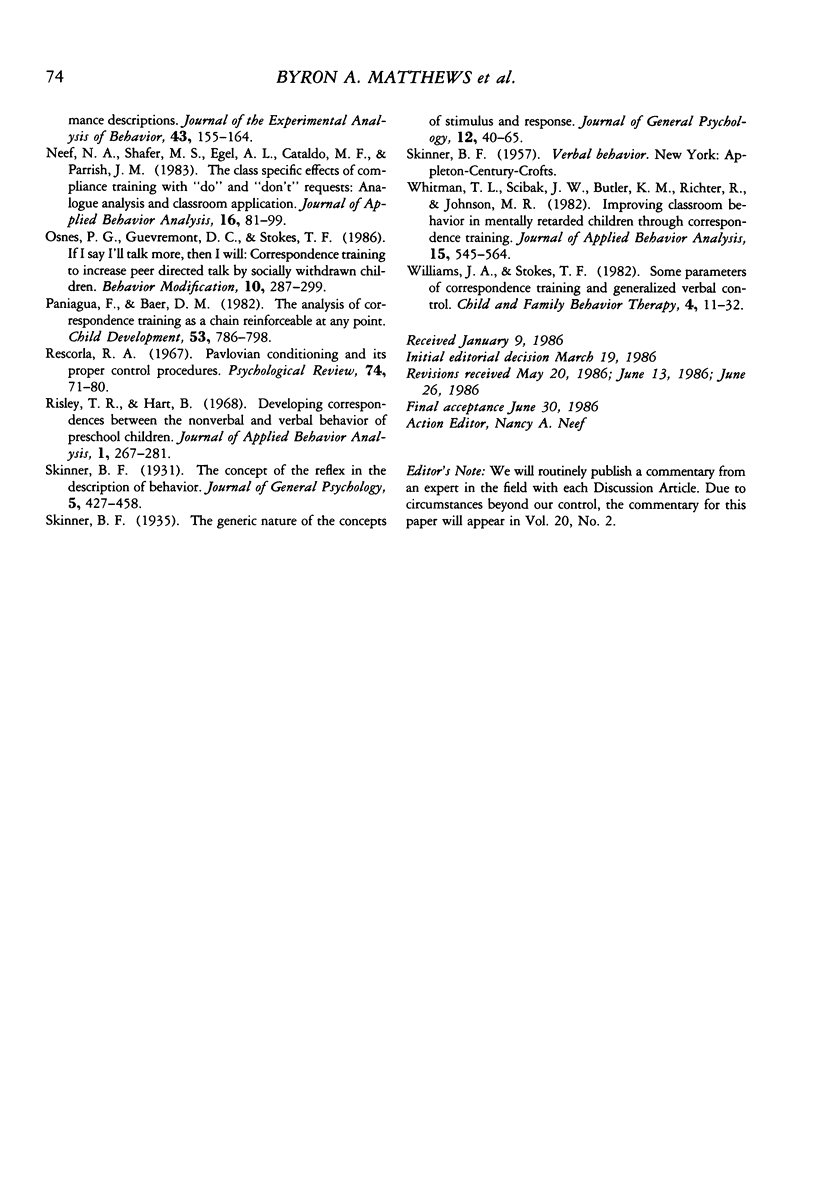
Selected References
These references are in PubMed. This may not be the complete list of references from this article.
- Baer R. A., Williams J. A., Osnes P. G., Stokes T. F. Delayed reinforcement as an indiscriminable contingency in verbal/nonverbal correspondence training. J Appl Behav Anal. 1984 Winter;17(4):429–440. doi: 10.1901/jaba.1984.17-429. [DOI] [PMC free article] [PubMed] [Google Scholar]
- Catania A. C., Matthews B. A., Shimoff E. Instructed versus shaped human verbal behavior: Interactions with nonverbal responding. J Exp Anal Behav. 1982 Nov;38(3):233–248. doi: 10.1901/jeab.1982.38-233. [DOI] [PMC free article] [PubMed] [Google Scholar]
- Gewirtz J. L., Stingle K. G. Learning of generalized imitation as the basis for identification. Psychol Rev. 1968 Sep;75(5):374–397. doi: 10.1037/h0026378. [DOI] [PubMed] [Google Scholar]
- Guevremont D. C., Osnes P. G., Stokes T. F. Programming maintenance after correspondence training interventions with children. J Appl Behav Anal. 1986 Summer;19(2):215–219. doi: 10.1901/jaba.1986.19-215. [DOI] [PMC free article] [PubMed] [Google Scholar]
- Israel A. C., Brown M. S. Correspondence training, prior verbal training, and control of nonverbal behavior via control of verbal behavior. J Appl Behav Anal. 1977 Summer;10(2):333–338. doi: 10.1901/jaba.1977.10-333. [DOI] [PMC free article] [PubMed] [Google Scholar]
- Israel A. C. Some thoughts on correspondence between saying and doing. J Appl Behav Anal. 1978 Summer;11(2):271–276. doi: 10.1901/jaba.1978.11-271. [DOI] [PMC free article] [PubMed] [Google Scholar]
- Karlan G. R., Rusch F. R. Correspondence between saying and doing: Some thoughts on defining correspondence and future directions for application. J Appl Behav Anal. 1982 Spring;15(1):151–162. doi: 10.1901/jaba.1982.15-151. [DOI] [PMC free article] [PubMed] [Google Scholar]
- Matthews B. A., Catania A. C., Shimoff E. Effects of uninstructed verbal behavior on nonverbal responding: Contingency descriptions versus performance descriptions. J Exp Anal Behav. 1985 Mar;43(2):155–164. doi: 10.1901/jeab.1985.43-155. [DOI] [PMC free article] [PubMed] [Google Scholar]
- Neef N. A., Shafer M. S., Egel A. L., Cataldo M. F., Parrish J. M. The class specific effects of compliance training with "do" and "don't" requests: analogue analysis and classroom application. J Appl Behav Anal. 1983 Spring;16(1):81–99. doi: 10.1901/jaba.1983.16-81. [DOI] [PMC free article] [PubMed] [Google Scholar]
- Osnes P. G., Guevremont D. C., Stokes T. F. If I say I'll talk more, then I will. Correspondence training to increase peer-directed talk by socially withdrawn children. Behav Modif. 1986 Jul;10(3):287–299. doi: 10.1177/01454455860103002. [DOI] [PubMed] [Google Scholar]
- Rescorla R. A. Pavlovian conditioning and its proper control procedures. Psychol Rev. 1967 Jan;74(1):71–80. doi: 10.1037/h0024109. [DOI] [PubMed] [Google Scholar]
- Risley T. R., Hart B. Developing correspondence between the non-verbal and verbal behavior of preschool children. J Appl Behav Anal. 1968 Winter;1(4):267–281. doi: 10.1901/jaba.1968.1-267. [DOI] [PMC free article] [PubMed] [Google Scholar]
- Whitman T. L., Scibak J. W., Butler K. M., Richter R., Johnson M. R. Improving classroom behavior in mentally retarded children through correspondence training. J Appl Behav Anal. 1982 Winter;15(4):545–564. doi: 10.1901/jaba.1982.15-545. [DOI] [PMC free article] [PubMed] [Google Scholar]


